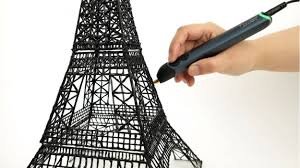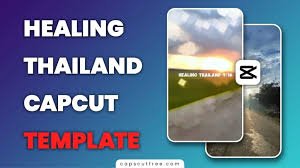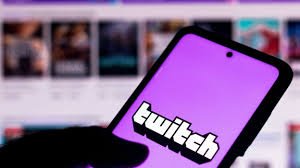
best 3d pen
What Makes a 3D Pen the Best?
If you’re an artist, designer, student, teacher, or just a curious creator, a 3D pen can open up a whole new world of expression. Unlike traditional drawing tools, a 3D pen lets you draw in the air, build structures, and turn your imagination into physical, tangible models. Whether you’re creating miniatures, fixing 3D prints, or crafting jewelry, the best 3D pen combines precision, ease of use, temperature control, and filament compatibility. But with so many options available, choosing the best 3D pen can be confusing. This guide covers what features to look for, top models on the market, and tips to get the most out of your 3D pen.
What Is a 3D Pen and How Does It Work?
A 3D pen is a handheld device that uses plastic filament—usually PLA, ABS, or PCL—to draw three-dimensional objects. It works similarly to a 3D printer but gives you the freedom to manually control the flow and direction of the filament. The plastic is heated inside the pen, melts, and is then extruded through a nozzle. As it cools, it solidifies, allowing you to create freeform shapes, build layer-by-layer, or draw directly on surfaces. It’s a fun and accessible tool for both professionals and hobbyists.
Key Features to Look For in the Best 3D Pen
Before you buy a 3D pen, it’s important to understand the features that define quality and performance:
1. Filament Compatibility: The most common filaments are PLA, ABS, and PCL. PLA is eco-friendly and easy to use, ABS is durable but emits fumes, while PCL melts at lower temperatures, making it safer for kids.
2. Temperature Control: The best pens offer adjustable temperature settings, allowing you to work with different filament types.
3. Speed Control: Variable extrusion speed helps control the flow for detailed work or quick fills.
4. LCD Screen: Displays temperature, filament type, or speed level—great for beginners and pros alike.
5. Ergonomic Design: A lightweight, comfortable grip is essential for long creative sessions.
6. Safety Features: Auto shut-off, low-temperature tips, and clog detection are key for safe use, especially for children.
7. USB or Battery Powered: Some pens offer wireless freedom, while others plug directly into the wall or USB port.
A good 3D pen is the one that matches your skill level, budget, and purpose—whether it’s fun crafting or professional prototyping.
Top 5 Best 3D Pens in 2025 (Expert Picks)
Here are some of the most reliable and highly rated 3D pens available today, suitable for both adults and kids:
1. MYNT3D Professional Printing 3D Pen
Best for: Artists and Designers
The MYNT3D Pro is a top-rated 3D pen with adjustable temperature (130°C–240°C), variable speed, and OLED display. It supports PLA and ABS filaments and comes with a replaceable nozzle for long-term use. It’s perfect for professionals and serious creators.
🔗 View on Amazon
2. 3Doodler Create+ 3D Pen
Best for: All levels
The 3Doodler Create+ is known for its build quality and ease of use. It supports proprietary filaments, making it safer but slightly pricier. It’s ideal for DIY projects, home décor, and minor repairs.
🔗 Official Shttps://the3doodler.com/products/create/ite
3. SCRIB3D Advanced 3D Printing Pen
Best for: Beginners and Students
Affordable and user-friendly, this pen comes with temperature control, adjustable speed, and anti-clogging features. It’s great for schools or first-time users who want to explore 3D drawing.
🔗 See full review on TechGearLab
4. MYNT3D Junior2 3D Pen for Kids
Best for: Kids and young creators
This is a low-temperature 3D pen using PCL filament, designed specifically for safety. With a thicker body and simple controls, it’s perfect for children aged 6 and up.
🔗 Buy on Walmart
5. 3Doodler Start+ Essentials Kit
Best for: Younger kids and classrooms
Designed for ages 6–13, this 3D pen uses eco-plastic, has no hot parts, and includes educational activity books. It’s widely used in STEM learning.
🔗 Explore more on 3Doodler Education
Each of these pens has unique advantages. Whether you’re a professional artist or a parent buying for your child, you’ll find something that fits your need.
How to Use a 3D Pen: Tips for Beginners
Using a 3D pen is easy, but getting the best results requires a few simple techniques:
- Start with templates: Use stencils or printable outlines to practice control and shape.
- Work on heat-safe surfaces: Use a silicone mat or glass to avoid damage and allow for easy peeling.
- Use both hands: One to draw, and the other to support or rotate your object for 3D designs.
- Go slow and steady: Control your speed to avoid thin or messy lines.
- Practice vertical drawing: Start with simple vertical towers to get used to 3D building.
- Don’t overload: Give your pen time to warm up and extrude consistently.
With a little patience, your 2D sketches will transform into 3D models, and your creativity will skyrocket.
Creative Project Ideas Using 3D Pens
Not sure what to make? Here are some fun and useful project ideas for 3D pen users:
- Miniatures for board games or tabletop RPGs
- Custom jewelry like earrings, rings, or pendants
- Wall art or framed 3D doodles
- Phone holders or stands
- Repair plastic items like chargers, zippers, or toys
- Build architectural models for school or design work
- Create keychains or name tags
- DIY holiday ornaments or decorations
- Design cosplay props or masks
The best part of a 3D pen is its open-ended creativity—if you can imagine it, you can draw it.
How to Maintain Your 3D Pen
To get the most life out of your 3D pen, follow these simple care tips:
- Use only compatible filaments (check user manual)
- Let the pen cool before storing
- Clean the nozzle regularly with a cleaning needle or filament
- Unload filament when not in use to avoid clogs
- Keep away from moisture and dust
- Avoid touching the hot nozzle tip
Proper maintenance ensures your pen stays in good shape for years of creation.
Common Questions About 3D Pens
Q: Are 3D pens safe for kids?
Yes, but choose pens designed for children that use low-temperature PCL filaments and no hot surfaces.
Q: Can I use a 3D pen for professional work?
Absolutely. Many artists and engineers use them for concept models, repairs, and design drafts.
Q: Do 3D pens smell?
ABS filaments may produce fumes—use them in ventilated areas. PLA and PCL are odorless and eco-friendly.
Q: How long does filament last?
A 1kg spool of filament can last several projects depending on usage. Small starter kits include 5–10 meters per color.
Q: Can I recycle 3D pen plastic?
PLA and PCL are biodegradable, but cannot be recycled through most curbside programs.
Conclusion: Pick the Best 3D Pen and Start Creating
A 3D pen is more than just a gadget—it’s a creative tool, an educational device, and a fun hobby starter all in one. Whether you’re sketching designs, building models, or helping your child explore 3D art, choosing the best 3D pen makes all the difference. Focus on features like temperature control, filament compatibility, and comfort, and you’ll find a model that fits your budget and skill level. With top brands like MYNT3D, 3Doodler, and SCRIB3D leading the way, you can dive into 3D creativity confidently. So grab your pen, load the filament, and bring your ideas to life—one layer at a time.






